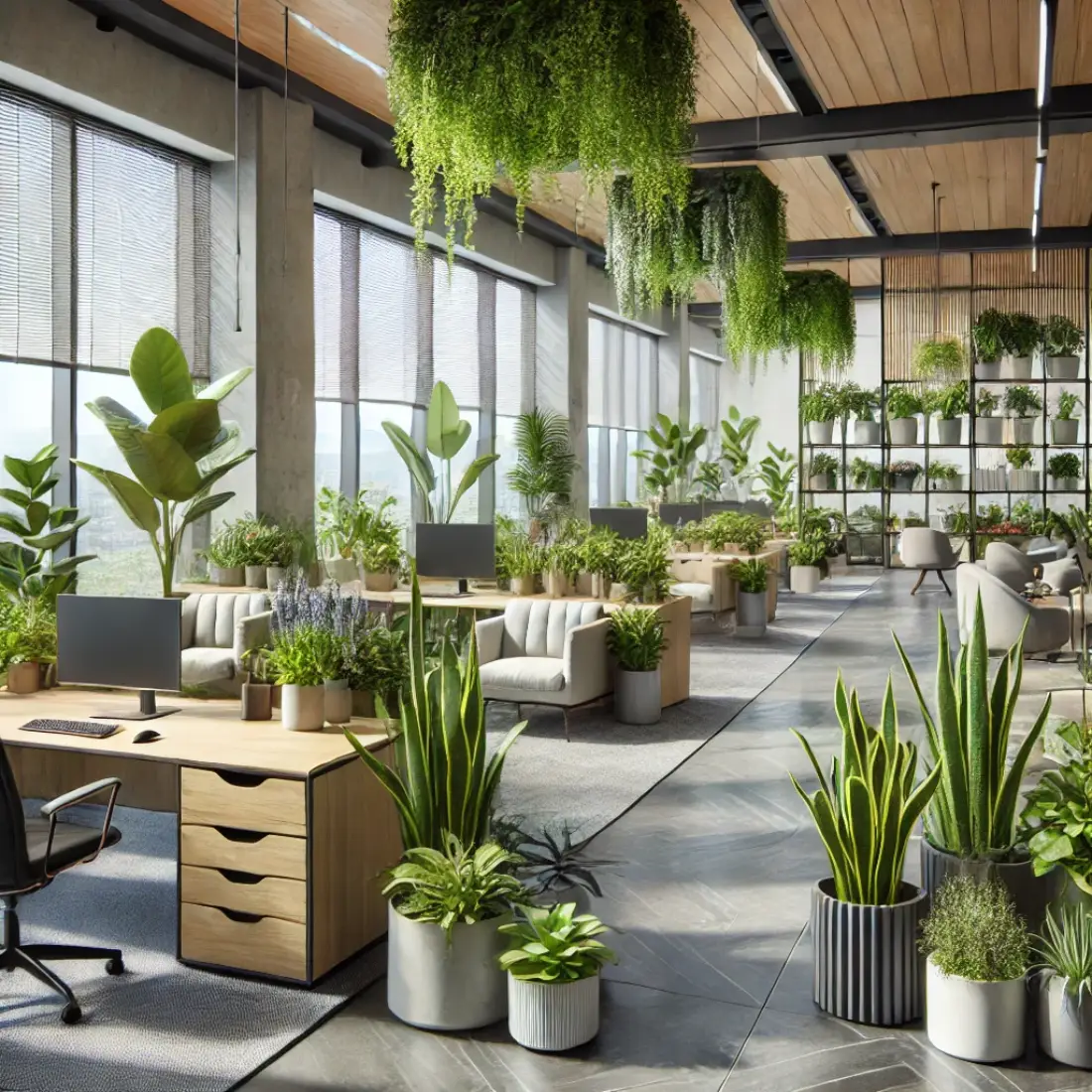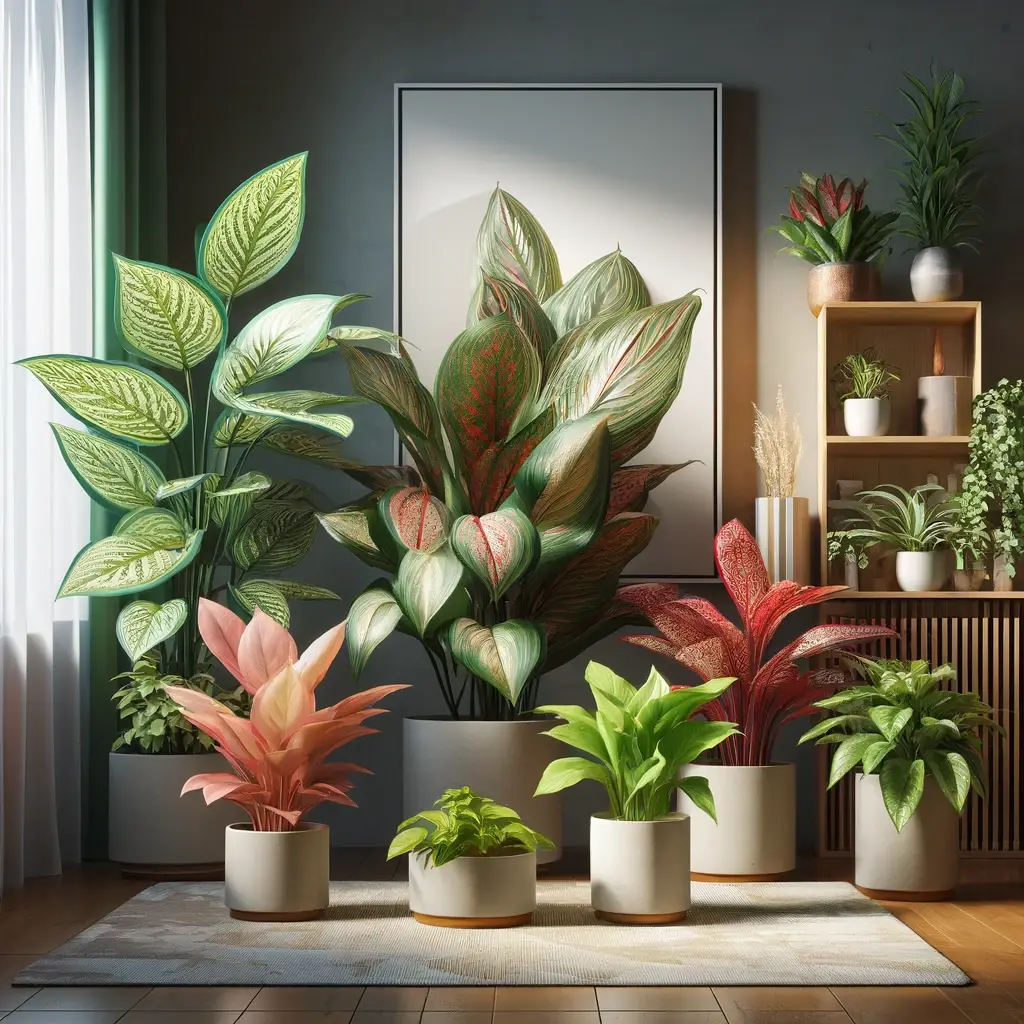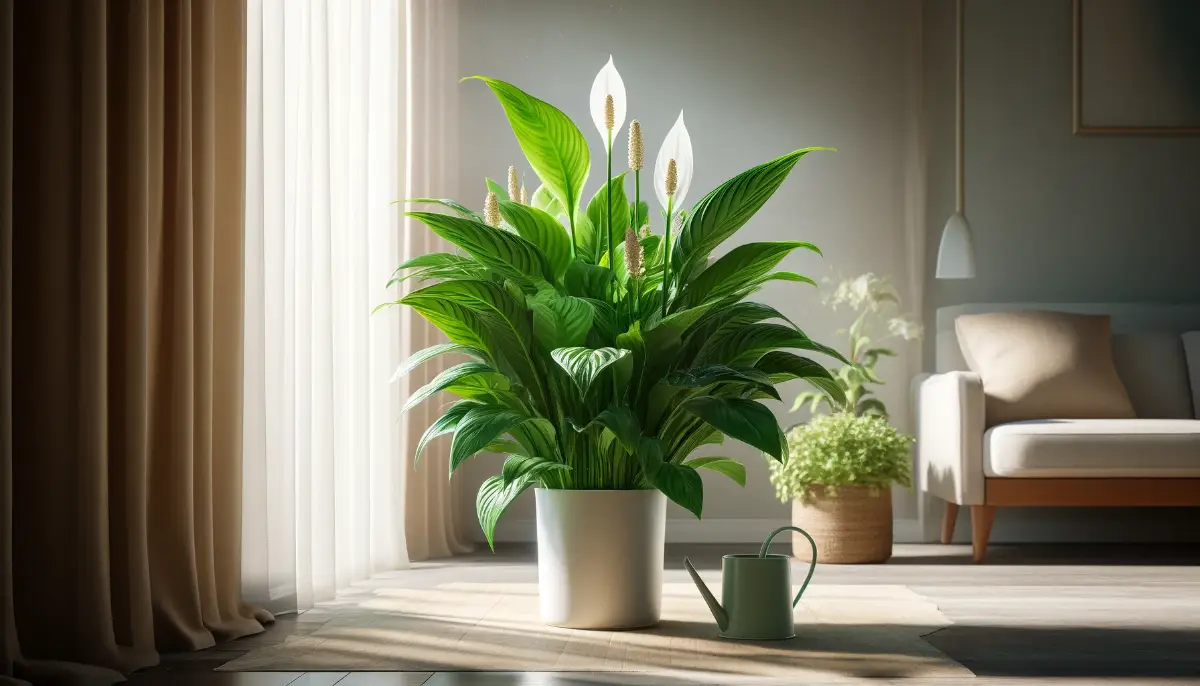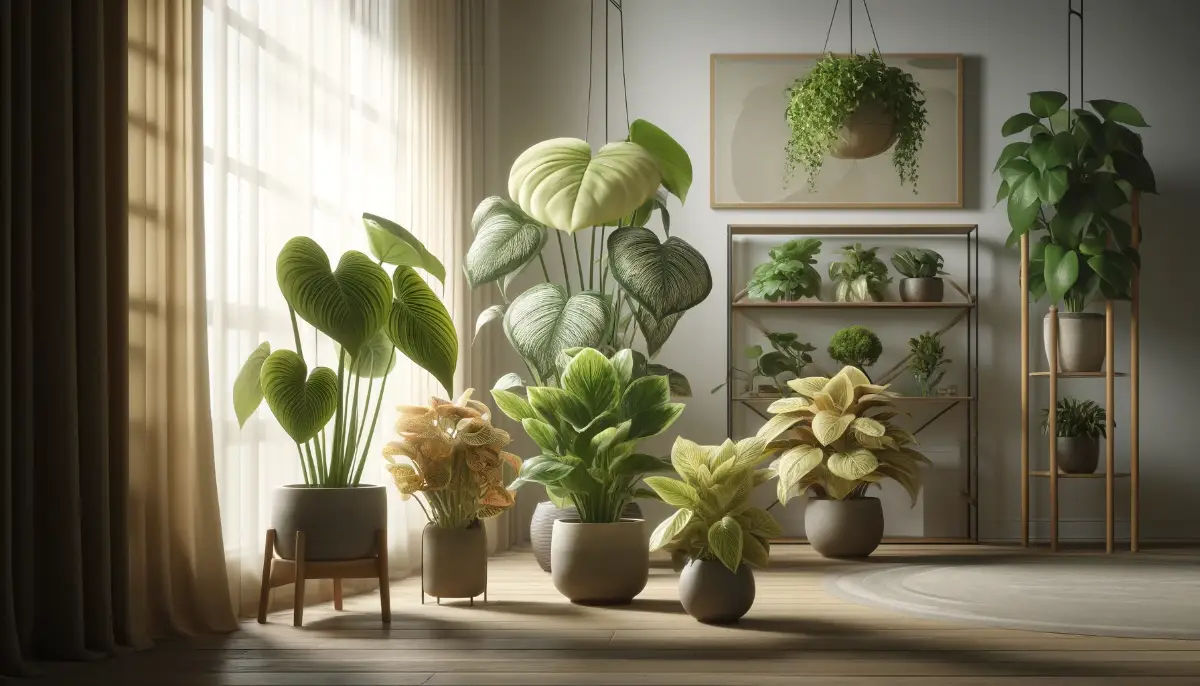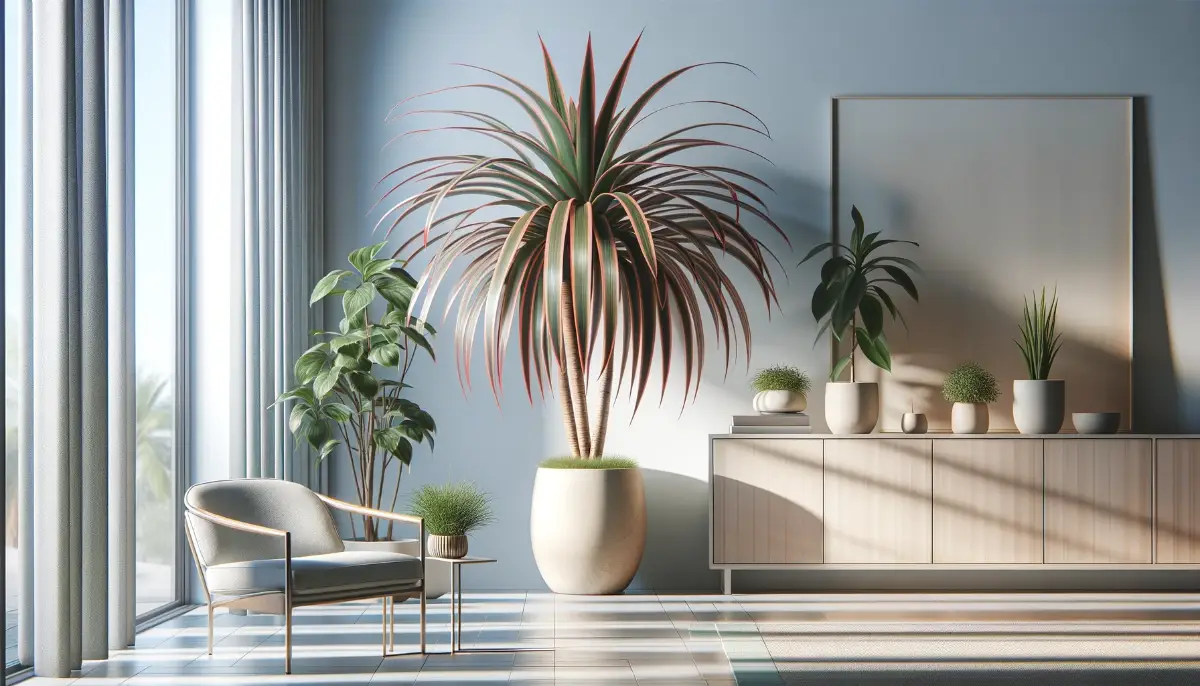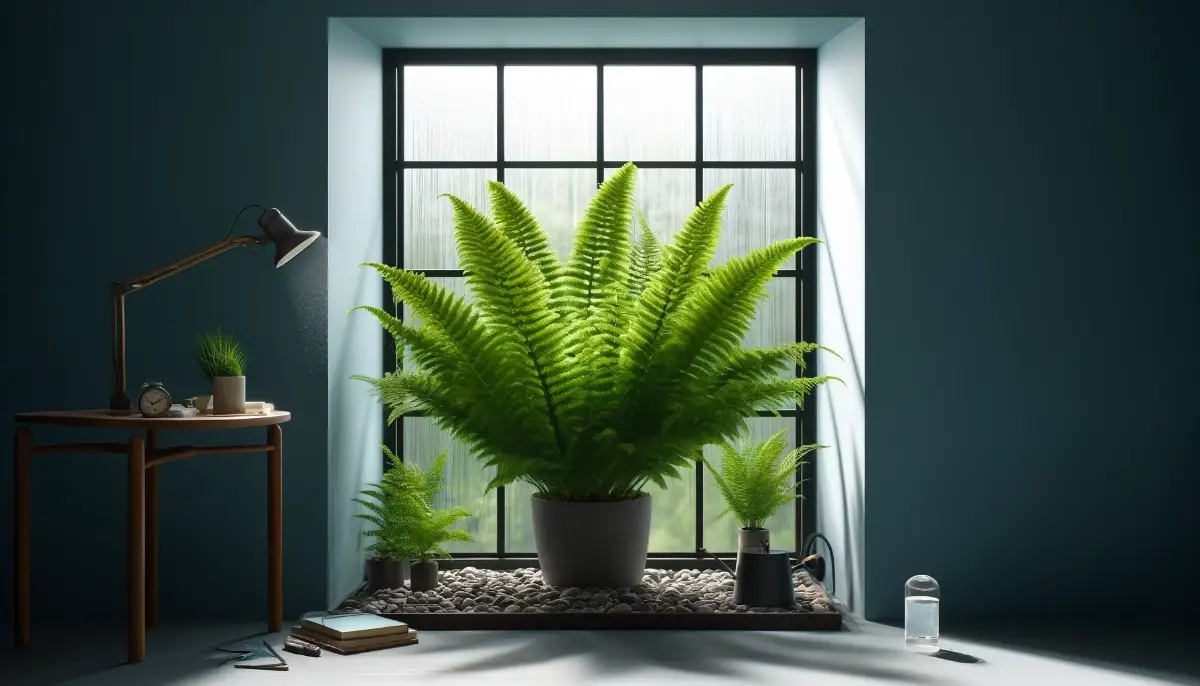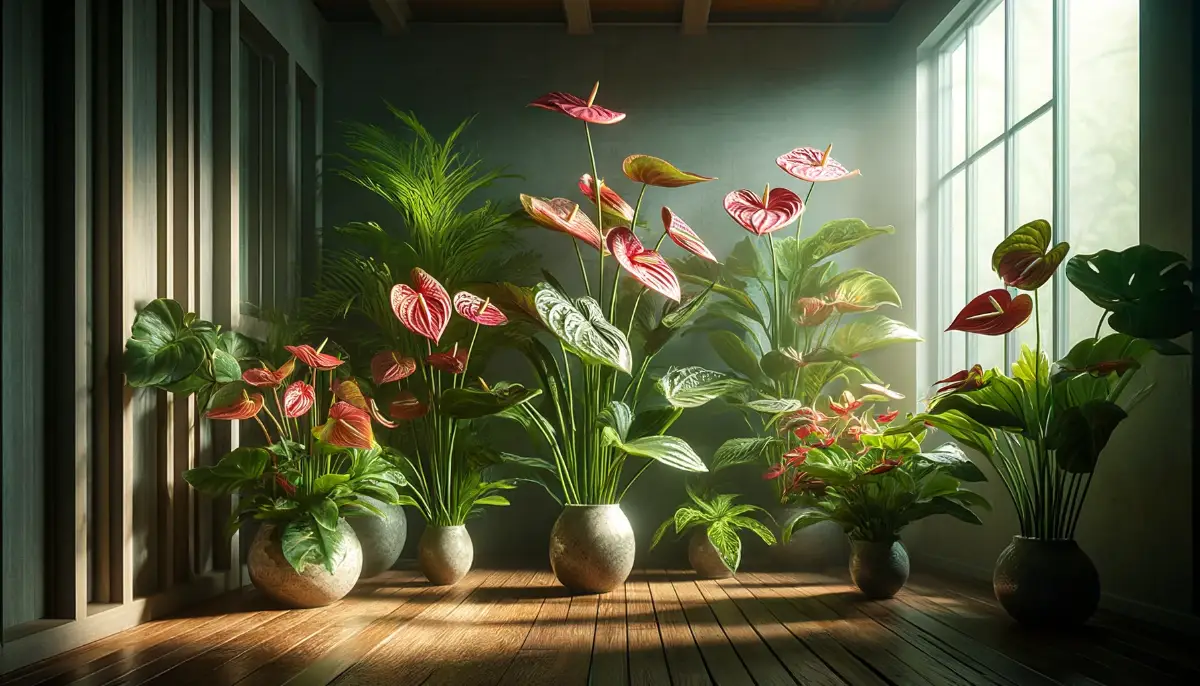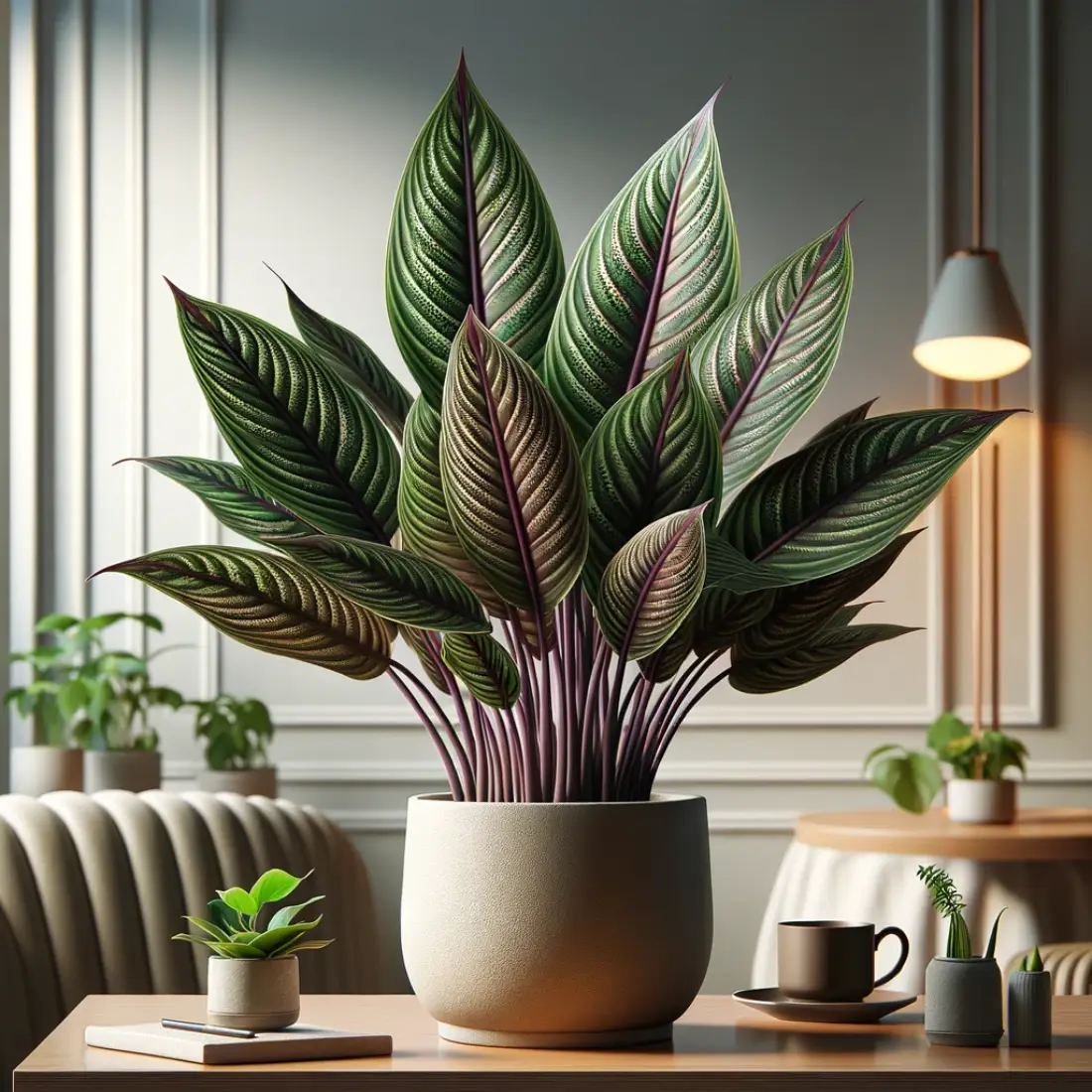Incorporating plants can transform a sterile office into a vibrant, productive workspace. Studies show that having plants in the office improves air quality by absorbing toxins and releasing oxygen, enhancing concentration and cognitive function.
Productivity increased by 15% with the addition of plants. This is due to the calming effect of greenery, which reduces stress and boosts focus. Moreover, plants can absorb noise in open office environments, making the space more pleasant and less distracting.
Adding low-maintenance plants to your office is an easy and effective way to improve the work environment, leading to a happier, healthier, and more productive team.
Top Office Plants
Selecting the best office plants involves choosing species that are low-maintenance, adaptable to indoor conditions, and effective at improving air quality. Here are some top picks with more detailed information:
Rubber Plant
The Rubber Plant is an excellent choice for office environments due to its low maintenance needs and air-purifying capabilities. It is particularly effective at removing toxins such as formaldehyde from the air.
The Rubber Plant thrives in indirect light and requires moderate watering, allowing the soil to dry out between waterings. It also prefers a humid environment, so occasional misting can be beneficial. Its large, glossy leaves add a touch of elegance to any office space, making it both a functional and decorative plant.
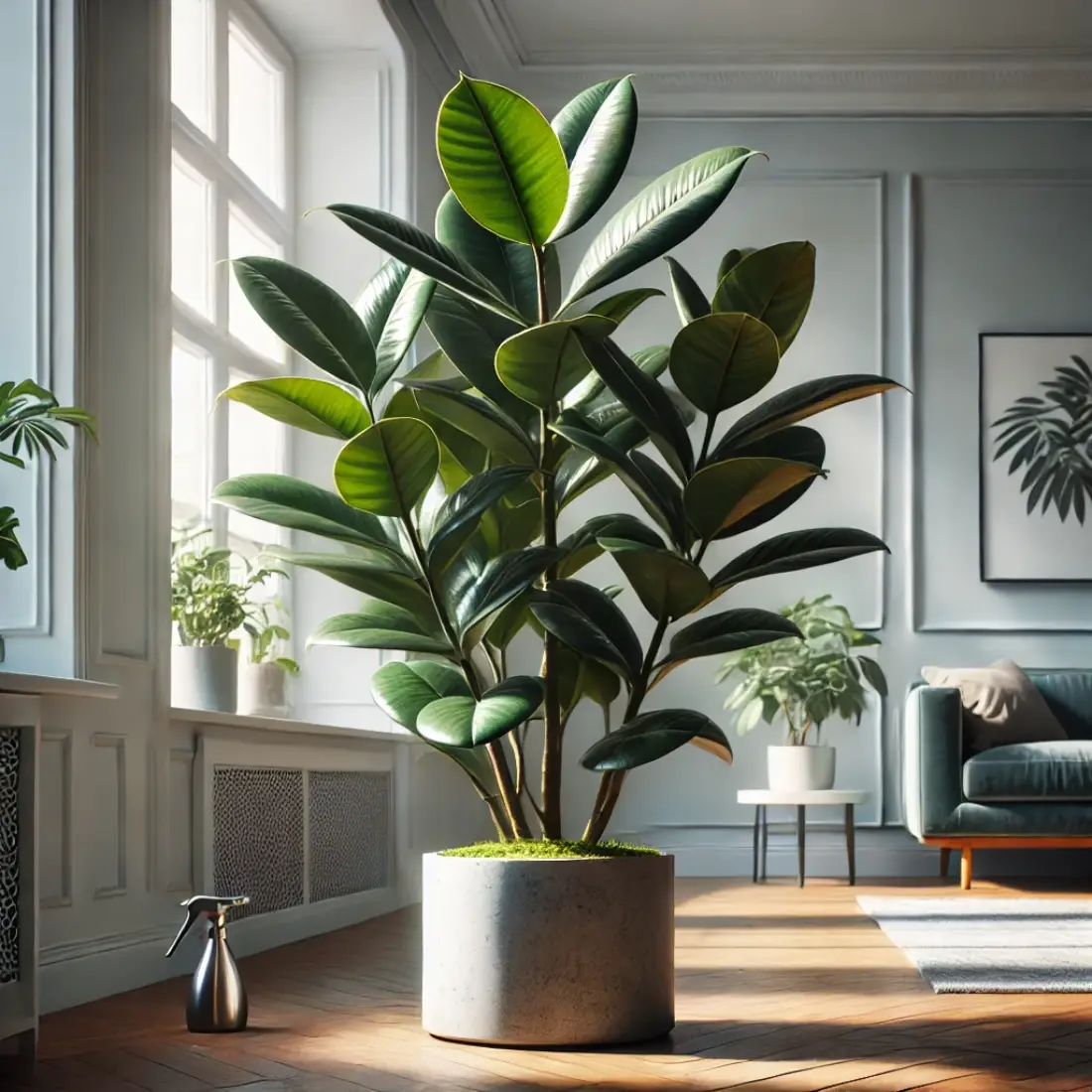
Chinese Evergreen
The Chinese Evergreen is a hardy plant known for its ability to thrive in low-light conditions and its minimal watering requirements. This plant is excellent at filtering indoor air pollutants and is highly adaptable, making it perfect for various office settings. It prefers well-draining soil and should be watered when the top inch of soil feels dry.
The Chinese Evergreen’s attractive foliage, which can be variegated with shades of green, silver, and red, adds a vibrant touch to office decor. It is also known for its longevity and resilience, making it a reliable choice for busy office environments.
Peace Lily
The Peace Lily is a popular office plant known for its elegant white flowers and air-purifying abilities. It effectively removes toxins such as benzene, formaldehyde, and trichloroethylene from the air, contributing to a healthier workspace. Peace Lilies thrive in low to moderate light, making them ideal for offices with limited natural light.
They prefer consistently moist soil but can tolerate occasional dry spells. The Peace Lily’s graceful appearance and low maintenance needs make it a perfect addition to any office, enhancing both aesthetics and employee well-being by creating a cleaner, more inviting environment.
Philodendron
Philodendrons are popular office plants due to their ease of care and air-purifying qualities. They thrive in both low and bright indirect light and need regular watering, allowing the top inch of soil to dry out between waterings. Philodendrons can grow as trailing vines or upright plants, offering versatility in how they are displayed.
They are effective at removing formaldehyde and other toxins from the air, contributing to a healthier office environment. Their lush, heart-shaped leaves add a touch of nature to the workspace, creating a calming and inviting atmosphere.
Dracaena
Dracaenas are visually appealing and highly effective at removing indoor pollutants such as benzene, formaldehyde, and trichloroethylene. They prefer indirect light and slightly moist soil, making them easy to care for. Dracaenas come in various varieties, each with unique leaf patterns and colors, ranging from deep green to variegated stripes.
They can grow tall, making them ideal for floor placement to add height and greenery to office corners. Regularly wiping the leaves helps maintain their appearance and ensures efficient air purification.
Bamboo Palm
The Bamboo Palm is an excellent air purifier and is particularly good at removing formaldehyde and other toxins from indoor air. It thrives in indirect light and requires moderate watering, with the soil kept consistently moist but not soggy.
This palm also benefits from a humid environment, so occasional misting is recommended. The Bamboo Palm’s elegant, feathery fronds add a tropical feel to the office, creating a refreshing and calming atmosphere. It can grow quite large, making it a striking focal point in larger office spaces.
ZZ Plant
The ZZ Plant is a perfect office plant known for its hardy nature and striking appearance. With glossy, dark green leaves, it adds a touch of elegance to any workspace. The ZZ Plant thrives in low to bright indirect light and requires minimal watering, making it ideal for low-maintenance care.
It’s effective at removing toxins like xylene and toluene from the air, improving indoor air quality. Its robust nature means it can withstand neglect, making it suitable for busy office environments. Incorporating the ZZ Plant can enhance productivity and create a healthier, more visually appealing office space.

Lavender
Lavender is an excellent office plant known for its calming scent and ability to reduce stress. Its aromatic properties are not just pleasant but also therapeutic, helping to create a more relaxed and focused work environment. Lavender thrives in bright light, so placing it near a sunny window is ideal. It prefers well-draining soil and should be watered sparingly, allowing the soil to dry out between waterings to prevent root rot.
In addition to its stress-relieving properties, lavender is also effective at repelling insects, making the office more comfortable. The plant’s beautiful purple flowers add a splash of color to the workspace, enhancing the aesthetic appeal. Regular pruning helps maintain its shape and encourages new growth. Incorporating lavender into the office can lead to a more serene and productive atmosphere, making it one of the best office plants to boost productivity and well-being.
Cactus
Cacti are ideal office plants due to their low maintenance and unique aesthetic. These resilient plants thrive in bright light and require very infrequent watering, making them perfect for busy office environments. With their diverse shapes and sizes, cacti add a modern, minimalist touch to any workspace.
They also help improve air quality by absorbing carbon dioxide and releasing oxygen. Additionally, cacti can reduce stress and enhance concentration, contributing to a more productive atmosphere. Their hardy nature and striking appearance make cacti a practical and attractive choice for boosting office productivity and well-being.
Boston Fern
The Boston Fern is a fantastic office plant known for its lush, feathery fronds and excellent air-purifying abilities. It effectively removes pollutants like formaldehyde and xylene, improving indoor air quality. Boston Ferns thrive in indirect light and require consistently moist soil, making regular watering and misting essential.
They prefer cooler temperatures and high humidity, which helps alleviate dry air in office environments. Placing them in hanging baskets or elevated planters maximizes their visual appeal and space efficiency. Boston Ferns not only enhance the office’s aesthetic but also contribute to a healthier, more comfortable workspace.
Anthurium
Anthurium, also known as the Flamingo Flower, is a vibrant office plant renowned for its striking red, pink, or white flowers and glossy green leaves. Beyond its aesthetic appeal, Anthurium is effective at improving indoor air quality by removing pollutants such as ammonia, formaldehyde, and xylene. This plant thrives in indirect light and requires well-draining soil, with watering needed when the top inch of soil feels dry.
Anthurium prefers a humid environment, so occasional misting is beneficial, especially in dry office conditions. Regularly wiping the leaves helps maintain their shine and ensures optimal photosynthesis. Its unique flowers can last for several weeks, adding a continuous splash of color and elegance to the workspace.
Incorporating Anthurium into the office not only enhances visual appeal but also promotes a healthier and more pleasant working atmosphere, making it one of the best office plants to boost productivity and morale.
Calathea
Calathea, known for its stunning decorative foliage, is an ideal office plant for low-light conditions. Its leaves feature intricate patterns and vibrant colors, adding a touch of elegance to any workspace. Calathea is particularly effective in improving air quality by absorbing toxins and increasing humidity, making it beneficial for overall health and well-being.
This plant thrives in indirect light and high humidity. It’s essential to keep the soil consistently moist but not waterlogged, and regular misting can help maintain the humidity levels that Calathea prefers. Avoid placing it in direct sunlight, as this can cause the leaves to fade or scorch.
Calathea’s striking appearance and air-purifying qualities make it one of the best office plants to boost productivity and aesthetic appeal. Its ability to thrive in lower light conditions also makes it versatile for various office settings, creating a more pleasant and visually stimulating environment.
Arranging Plants in Your Office for Maximum Benefit
Strategically arranging the best office plants can maximize their benefits and enhance the workspace. Here are some tips for optimal plant placement:
Identify Key Areas: Place plants in areas where employees spend the most time, such as desks, meeting rooms, and break areas. This ensures that the benefits of improved air quality and reduced stress are felt throughout the office.
Use Plant Stands and Containers: Elevate smaller plants on desks or shelves using plant stands to save space and create visual interest. Attractive containers can also complement office decor and make maintenance easier.
Maximize Light: Position light-loving plants like cacti and lavender near windows to ensure they receive adequate sunlight. For plants that thrive in low light, such as Chinese Evergreen and Calathea, choose spots away from direct sunlight.
Create Green Zones: Designate specific areas as “green zones” with clusters of plants. This can create a relaxing oasis within the office, ideal for breaks or casual meetings.
Balance and Symmetry: Arrange plants symmetrically to create a balanced look. This can be aesthetically pleasing and contribute to a harmonious office environment.
FAQs about The Best Office Plants
How many plants should I have in my office?
The optimal number of plants depends on the office size and layout. Generally, having one plant per 100 square feet can significantly improve air quality and aesthetics. Start with a few plants and gradually add more to see what works best for your space.
What if my office has low light?
Choose low-light-tolerant plants such as Chinese Evergreen, ZZ Plant, and Calathea. These plants thrive in indirect light and can adapt to darker areas, making them perfect for offices with limited natural light.
How often should I water my office plants?
The watering frequency depends on the plant type. Generally, most office plants need watering once a week. Check the soil moisture level before watering; if the top inch is dry, it’s time to water. Overwatering can be just as harmful as underwatering.
How do I maintain humidity for my office plants?
To maintain humidity, especially for plants like Boston Fern and Calathea, mist the leaves regularly. Placing a humidifier nearby or grouping plants together can also help increase humidity levels around them.
What are the best office plants for air purification?
Some of the best air-purifying office plants include the Rubber Plant, Spider Plant, Peace Lily, and Bamboo Palm. These plants are effective at removing common indoor pollutants and improving air quality.
Can office plants help reduce noise levels?
Yes, plants can help reduce noise levels by absorbing sound. Larger plants with broad leaves, such as Rubber Plant and Fiddle Leaf Fig, are particularly effective at dampening noise in open office environments.
How do I prevent pests on my office plants?
Keep your plants healthy by maintaining proper watering and light conditions. Regularly inspect leaves for signs of pests and clean them with a mild soap solution if necessary. Introducing natural predators like ladybugs can also help control pests.
Are there any low-maintenance office plants?
Yes, some low-maintenance office plants include the ZZ Plant, Snake Plant, and Pothos. These plants require minimal care, making them ideal for busy office environments.
How can I decorate my office with plants?
Use a mix of plant sizes and types to create visual interest. Place small plants on desks and shelves, and larger plants on the floor or in corners. Hanging planters and wall-mounted pots can also save space and add a unique touch.
Can plants really boost productivity in the office?
Yes, studies have shown that plants can boost productivity by reducing stress, improving air quality, and creating a more pleasant work environment. Employees are likely to feel more relaxed and focused in a green office.

